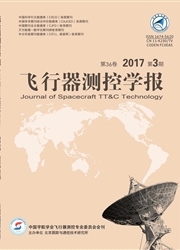

 中文摘要:
中文摘要:
通过分析中国深空网首次△DOR(Delta Differential One way Ranging,双差分单向测距)联合测轨试验的干涉测量事后数据,重点从观测量随机精度、闭合时延等方面讨论了国内深空网与国内VLBI(Very Long Baseline Interferometry,甚长基线干涉测量)观测网、国内深空网与国际深空网的联合干涉处理情况,并与ESOC(European Space Operation Center,欧洲空间操作中心)数据处理结果进行了比对.试验结果表明:我国深空网已具备独立或联合开展深空探测器导航测轨的系统支持能力;深空站系统具备高速率数据接收、采集、记录、传输能力,采集数据处理精度优于1 ns;深空网干涉测量信号处理中心具备多体制信号的干涉处理分析能力,其分析精度与ESOC处理精度差异在0.1 ns量级.
 英文摘要:
英文摘要:
As a summary of the first multi-agency joint ADOR (Delta Differential One Way Ranging) VEX (Venus Express) orbit tracking experiment for China's deep space network and based on the results of data analysis of the Interferometric Tracking Center of China' s deep space network, joint interferometric processing results between China's deep space network and China's VLBI (Very Long Baseline Interferometry) network and between China's deep space network and ESA's deep space station are analyzed from aspects including random accuracy of observa bles and closed-loop delay. The results are compared with those of ESOC (European Space Operation Center). Re- suits of the experiment indicate that China~s deep space network already has independent capability to provide navi- gation and orbit determination support to deep space probes. The deep space stations are capable of high data rate data reception, collection, recording and transfer and the collected data processing accuracy is better than 1 ns. The Interferometric Tracking Center has interferometric processing and analysis capability for multi-system signals and the difference between its data analysis accuracy and ESOC processing accuracy is around 0.1 ns.
 同期刊论文项目
同期刊论文项目
 同项目期刊论文
同项目期刊论文
 期刊信息
期刊信息
